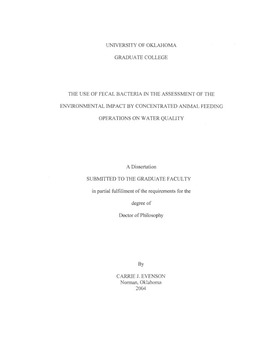| dc.description.abstract | Many sources of pollution, including agricultural, industrial, and urban sources, can increase a stream or lake's nutrient and bacterial concentrations. In order to improve water quality, these sources must be identified, and microbial source tracking (MST) methods are currently under development to do just that. MST methods generally use either an organism's genetic or physiological traits to identify the major contributor to nonpoint source pollution. In this study, fecal bacterial decay rates and patterns for four known sources (cattle, human, poultry, and swine) were examined to determine if a phenotypic MST method based on fecal bacteria species composition patterns could be used to distinguish between the major sources of fecal pollution in surface water and groundwater. In order to develop the fecal bacteria species composition MST method, a total of 257 species composition patterns were generated from known sources. The rates of correct classification (RCC) for FC species composition patterns were 64%, 71%, 47%, and 70% for cattle, human, poultry, and swine, respectively. The RCC for FS species composition patterns were 87%, 86%, 74%, and 83% for cattle, human, poultry, and swine, respectively. The average rate of correct classification for samples from all known sources was higher for FS species composition data (82%) than for FC (63%). The average rate of correct classification was increased when the FC and FS species composition data was combined (93%). When this method was applied to a watershed in north central Oklahoma and compared to a well-researched MST method, ribotyping, both methods identified the major source of fecal pollution in the Turkey Creek watershed as cattle manure and served to cross-validate the results of each method. Fecal bacteria species composition identified cattle as the major source of pollution in 55.6% of the total samples taken while ribotyping identified cattle as the source of 36.9% of the total unknown Escherichia coli isolates. This study indicates that a phenotypic MST methodology based on species composition of dominant fecal bacteria shows promise for determining major contributors to NPS pollution, with a method using the combined FC and FS species composition having the most potential for regulatory use. | en_US |
